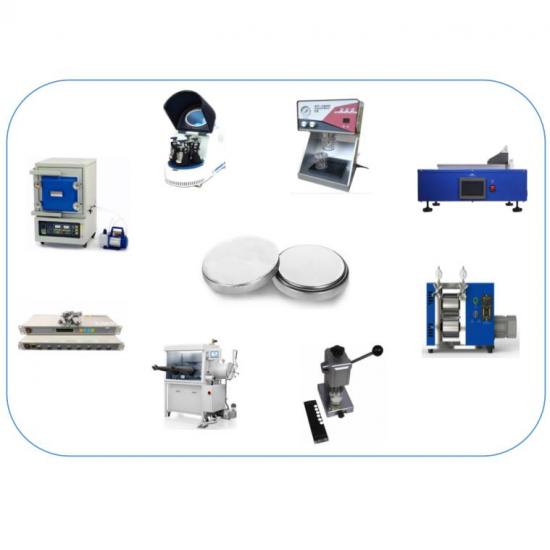Coin cell lab line is a production line that is specifically designed to produce coin cells, which are small-sized cylindrical batteries that are widely used in various applications, including portable electronics, medical devices, and automotive industries. Coin cell lab lines consist of several machines that are used to manufacture these batteries, including the electrode preparation machine, electrode slitting machine, coin cell assembly machine, and coin cell crimping machine.
Coin Cell Lab Line is a set of equipment used for the research and development of coin cell batteries. The equipment required for a basic Coin Cell Lab Line includes:
Coin cell crimper: A device that crimps the coin cell components together to form a sealed cell.
vacuum degassing mixer: A machine used to mix the electrode slurry with solvent and additives.
Film Coating Machine: A device used to evenly spread the electrode slurry onto the current collector.
Coin Cell Disc Cutter: A device that cuts the electrode into a specific shape and size.
Coin cell tester: A device used to test the performance and characteristics of the coin cell.
Vacuum glove box: A sealed chamber filled with inert gas to prevent the electrode materials from oxidation.
Vacuum oven: A device used to dry the electrode and assemble the coin cell.
Precision balance: A scale used to accurately measure the weight of the electrode materials.
The production process of coin cell lab line starts with the preparation of electrode materials, which involves mixing the active material with binders and conductive additives to create a homogeneous mixture. The mixture is then coated onto a current collector substrate, which is usually made of aluminum or copper. The coated substrate is then dried in an oven to remove any solvents before being cut into strips using the electrode slitting machine.
Once the electrodes are ready, they are assembled into a coin cell using the coin cell assembly machine. The machine places the cathode and anode electrodes into a coin-shaped container, which is then filled with an electrolyte solution to allow for the ion exchange between the electrodes. After the electrolyte solution is added, the cell is sealed by crimping the top and bottom of the cell using the coin cell crimping machine.
Coin cell lab lines offer several advantages over other battery production lines. Firstly, they are compact and require less space, making them ideal for small-scale production. Additionally, they are highly automated, reducing the need for manual labor and improving production efficiency. Furthermore, coin cells are cheaper to produce compared to other battery types, making them more cost-effective for certain applications.
However, there are several factors that need to be considered when using coin cell lab lines. Firstly, the small size of coin cells means that they have limited capacity and are not suitable for high-power applications. Additionally, the production process requires strict quality control measures to ensure the consistency and reliability of the cells. Finally, the materials used in the production process, such as the electrolyte and active materials, can be hazardous and require proper handling and disposal methods.
In conclusion, coin cell lab lines are an important tool for producing small-sized batteries for a range of applications. Their compact size and high level of automation make them ideal for small-scale production, while their cost-effectiveness makes them a popular choice for certain applications. However, careful attention to quality control and safety measures is essential when using these machines to ensure the production of reliable and safe battery cells.




 Online service
Online service
